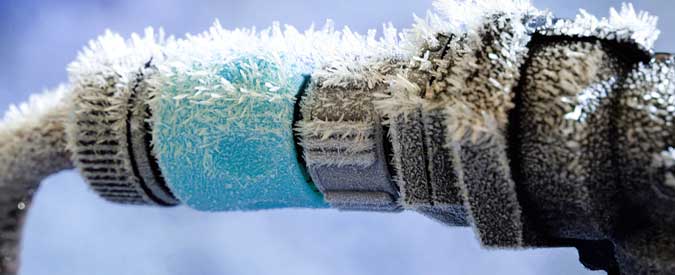Last Updated: February 15, 2023
Fixing a Frozen or Burst Pipe: Average Price for Repairing Frozen Water Pipes
Find an HVAC Pro
Fill out our 30 second free form to receive competitive pricing from pre-screened HVAC contractors. No commitments. Our service is always free!
A frozen or burst pipe is an emergency situation: You’re facing serious and costly water damage to your home and possessions. Pipes that are especially at risk include those in outside walls and those in unheated crawl spaces, and the riskiest times are unexpected cold snaps or prolonged winter freezes.
If the pipe is frozen but has not yet burst, you need to take immediate steps to unthaw it. If the pipe has already burst, the best you can do is try to mitigate damage. Not surprisingly, prevention is the best way to deal with the problem.
Dethawing a Frozen Pipe
If you turn on the faucet and little or no water comes out, chances are you’re dealing with a frozen pipe. You can either call in a professional or try to do the dethawing yourself by following these steps:
- Identify the pipe that is frozen and the specific area that is blocked. In many cases, the frozen area of the pipe will be covered in frost or ice, or it might be swelling from the pressure.
- If the pipe is exposed, try one of several techniques to heat it. Warm the area with a hair dryer, a heat lamp, a portable heater or electric heat tape.
- If the pipe is behind a wall, the job is going to be difficult. You can turn up the heat in the house and simply wait (although this is a gamble), tear out the wall or ceiling to access the frozen pipe, or place heaters or heat lamps near the wall.

Find an HVAC Pro
Fill out our 30 second free form to receive competitive pricing from pre-screened HVAC contractors. No commitments. Our service is always free!
Repairing a Burst Pipe
If the pipe has already burst, the first and most important task is stopping the flow of water. Locate the main water supply and shut it off. A burst pipe can spew hundreds of gallons of water per hour, which can lead to devastating damage. Turn on all the cold water taps and flush all toilets to get the remaining water out of the pipes.
Once the water is under control, you’ll want to locate the section of pipe that burst. If you’re dealing with a very tiny crack, patching it up is a temporary solution. But eventually you’ll have to properly repair or replace that section of piping. This can be a DIY job if you’re handy, but call in a professional plumber if you’re not.
If a burst pipe has caused water damage, call in a professional restoration company right away. The pros will be able to clean up as much of the water as possible and prevent the damage from spreading.
Preventing a Burst Pipe
Preventing a pipe from bursting in the first place is the best course of action. Here are some steps you can take in especially cold weather to reduce the chances that you’ll have to deal with thousands of dollars of water damage.
- Leave faucets trickling ever so slightly. The flow of water will prevent the pipes from freezing.
- Leave under-sink cabinet doors open so the pipes are exposed to more warm air.
- Wrap problematic pipes with electrical tape, or place a portable heater near under-sink pipes to prevent them from freezing.
- Insulate pipes, particularly those near outside walls or in unheated crawl spaces.
Find the Best HVAC Pros Who Will Compete for Your Business
Find an HVAC Pro
Fill out our 30 second free form to receive competitive pricing from pre-screened HVAC contractors. No commitments. Our service is always free!
Find an HVAC Pro
Fill out our 30 second free form to receive competitive pricing from pre-screened HVAC contractors. No commitments. Our service is always free!